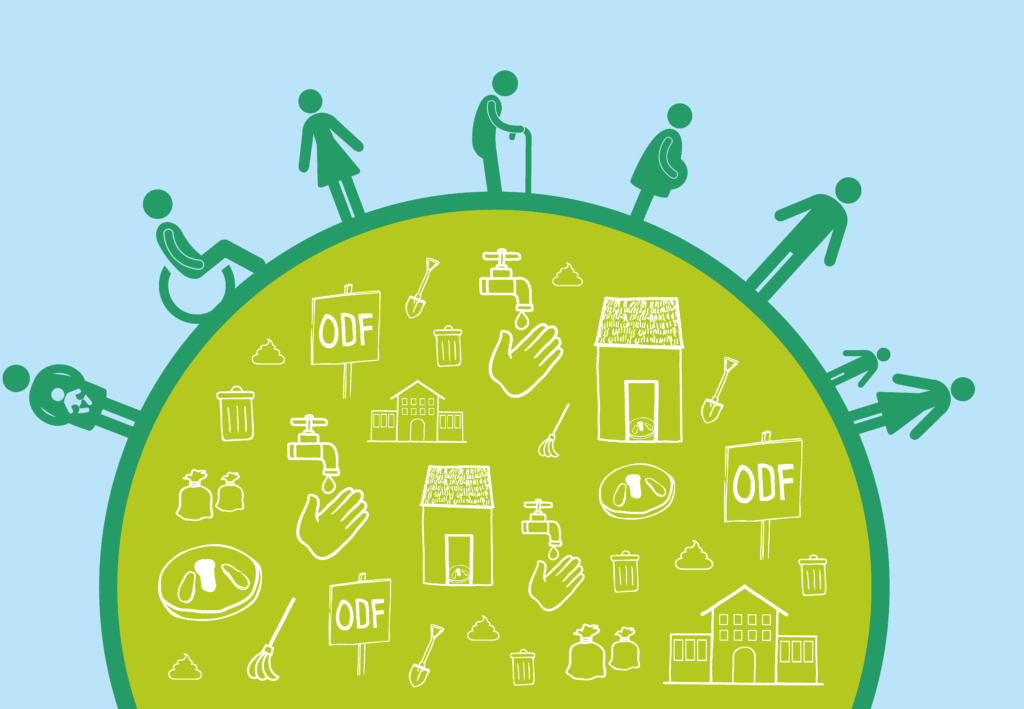Seven years ago, our chapter “Promoting choice: smart finance for rural sanitation development”, in Sustainable Sanitation for All responded to concerns that, even where implementation approaches such as Community Led Total Sanitation (CLTS) or Market-Based Sanitation (MBS) were designed to reach everyone, some communities and people either did not achieve or benefit from intended sanitation and hygiene collective outcomes. Others did not manage to sustain the outcomes i.e., they built low-cost or badly constructed facilities that were not durable, or they were unable to sustain their sanitation services when pits filled, facilities were damaged, and repairs or replacements were needed.
In 2016, subsidy remained a dirty word in much of the sanitation world, with the influential CLTS and MBS lobbies concerned that sanitation subsidies might undermine or otherwise detract from their approaches. But there was growing support for a different approach to toilet subsidies, and our analysis suggested that more demand-side finance options (which offered choice to households and were more outcome-focused and results-oriented) might be able to address some of the concerns around conventional sanitation finance.
Today, we are not sure that the discussion has moved on much. There appears to be more general recognition that targeted toilet hardware subsidies have a place in rural sanitation and hygiene programming, but there has been relatively little large-scale implementation of sanitation finance in rural sanitation and hygiene programmes, particularly in sub-Saharan Africa.
Smart sanitation subsidies
Where toilet subsidies have been used at scale, for example, by the governments of Bangladesh, India and Nepal in their respective bids to achieve 100% Open Defecation Free (ODF) status, they have often been more conventional toilet subsidies – that is, up-front provision of a package of latrine materials, rather than smart subsidies that offer choice to households. In these cases, there is some evidence of the toilet subsidy problems that were discussed in our chapter, with few impartial observers (and few independent surveys) convinced that any of these three countries is genuinely 100% ODF.
Where smart sanitation subsidies have been used, such as in the East Meets West CHOBA programme in Cambodia and Vietnam, it is hard to disentangle the reasons for success: were the results because of the supportive environments, which allowed private sector provision of sanitation services to flourish? Or the high-quality subsidy design and implementation? Or the intensive monitoring and support provided? As a result, it is hard to draw lessons from these experiences for replication in other contexts.
Results-based financing
A few large-scale programmes supported by the UK government and the World Bank have used a results-based financing (RBF) approach to achieve sanitation outcomes. In most of these programmes, payments are made to either governments or implementing agencies (rather than households or communities) for the achievement of pre-defined sanitation outcomes. The initial findings from these RBF programmes are mixed: some stakeholders have noted that the RBF approach (which does not define the implementation approaches to be used or specify how funds should be spent) provides significant freedom to innovate and encourages flexible and adaptive management, and that the strong outcome focus and time pressure (before verification) are effective in achieving results.
Others suggest that the RBF approach increases the attention to numbers (rather than people), and that it is hard to choose outcome targets that are realistic and flexible (to allow for unexpected changes in the situation, or greater effectiveness than expected), which often means that one party loses out (either: the financier and the beneficiaries from lower results; or the supplier due to lower payments).
In our opinion, RBF holds great promise where:
- Financiers are willing to take the risk
- Time is taken to agree realistic and useful outcomes
- Sustainable services are incentivised
We should all be able to agree on the outcomes that we want to achieve, and good will always comes from spending time looking more closely at the results (and the way they were achieved) and talking to the people who use the services (or not).
Area-wide sanitation approaches
Another new development is the move towards area-wide sanitation approaches. The 2019 WaterAid-UNICEF-Plan International Guidance on Programming for Rural Sanitation encourages the implementation of a rural sanitation strategy designed to achieve universal sanitation and hygiene outcomes across an entire population (e.g. district population). The achievement of area-wide outcomes requires that everyone must be reached (within an agreed timeframe), with a mix of implementation approaches recommended, including the use of sanitation finance to reach those who would otherwise struggle to achieve the use of basic or safely managed sanitation services. The intention is that segments of the population, such as people from marginalised groups and people living in challenging contexts, should be supported through targeted financial (and other support) mechanisms, and that these support systems should be well aligned with demand creation and market-based sanitation activities.
But, as yet there are not many examples of area-wide sanitation programs that include a sanitation finance component (alongside the more conventional CLTS and MBS interventions), and some stakeholders worry that an ideal area-wide sanitation approach will become so complex that it will be extremely difficult to manage successfully.
Long-term monitoring of access and use
One final but important point: the smart sanitation finance chapter focused largely on the financial mechanisms used to encourage and support the use of sanitation services. While there was some discussion of finance for collective outcomes (e.g. conditional grants on achievement of collective outcomes), the bulk of the discussion was around how best to support people from marginalised groups to gain access to and use sanitation services.
The 2016 discussion neglected an important issue, which is that a toilet subsidy only provides a one-time push towards the use of safely managed sanitation services. While we hope that the toilet subsidy will provide at least a short-term improvement in access, we do not know whether improved access translates into use of services over the medium or long term, and we often make little effort to find out.
Several more recent studies have suggested that people from marginalised groups struggle to access sanitation finance (due to overly complex or unfamiliar conditions, or illiteracy, or financial requirements, or fear of the unknown); and often face problems in sustaining use of their improved sanitation facilities or services (due to limited ability or willingness to repair and replace facilities, or to empty pits or tanks). However, available data is lacking on the long-term sanitation outcomes among marginalised households who received sanitation subsidies, due to limited monitoring beyond the life of the sanitation finance intervention.
The learning seems to be that more long-term institutional approaches (policies, budgets, capacity, targeted support services and disaggregated monitoring) are required to provide effective support to people who would otherwise struggle to use safely managed sanitation services. And that toilet subsidies alone are unlikely to achieve this on their own!







